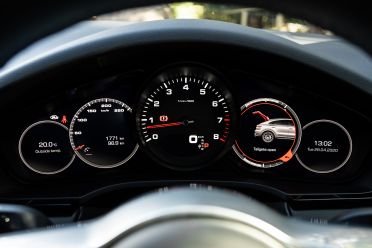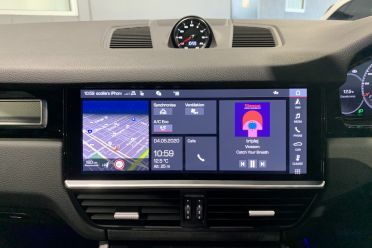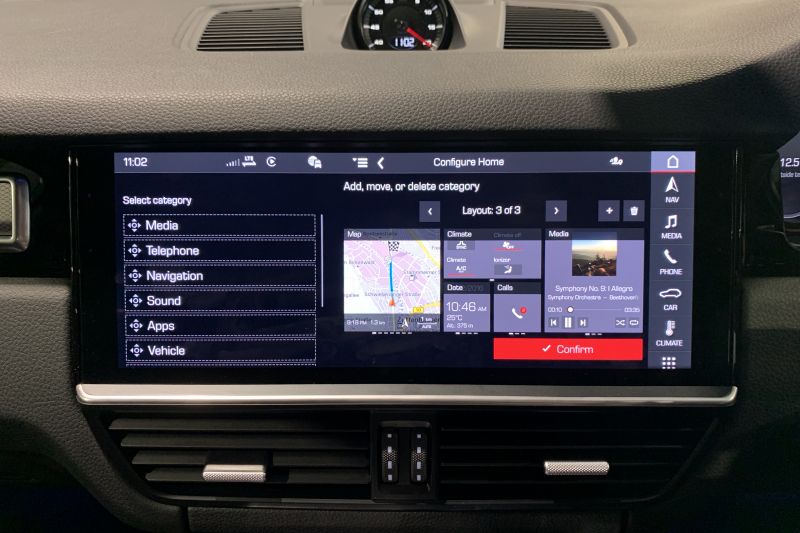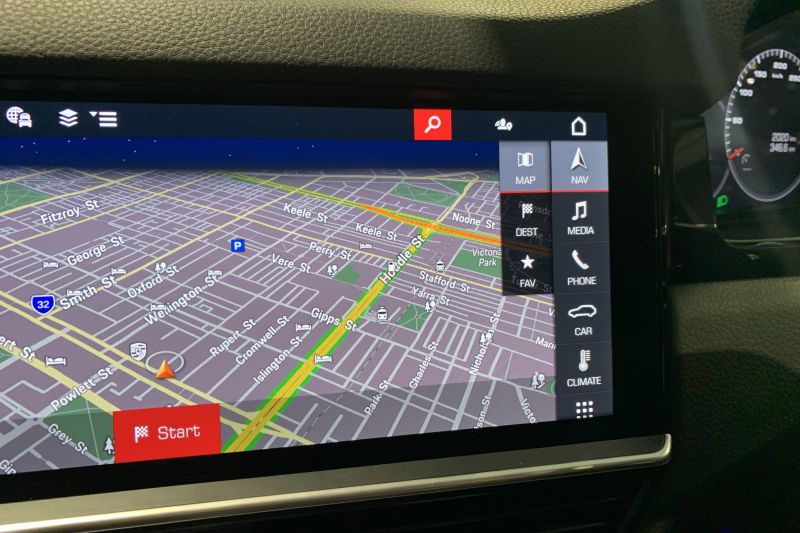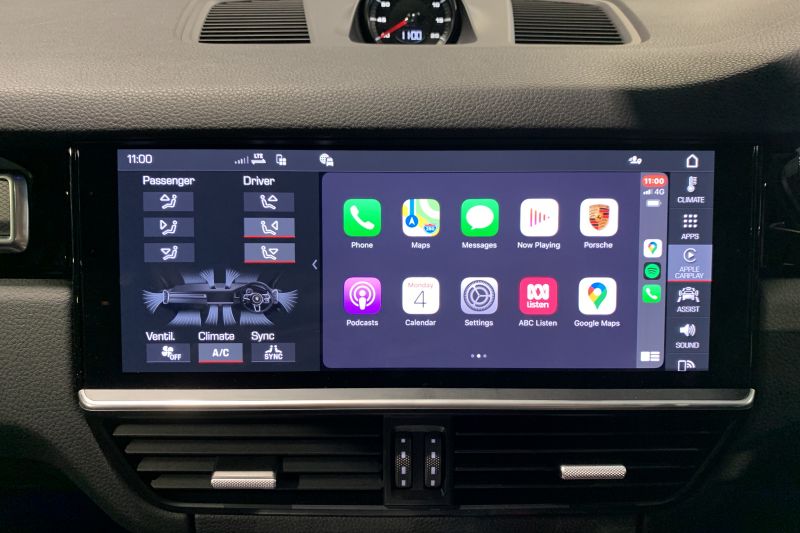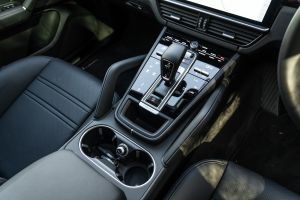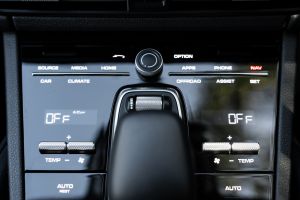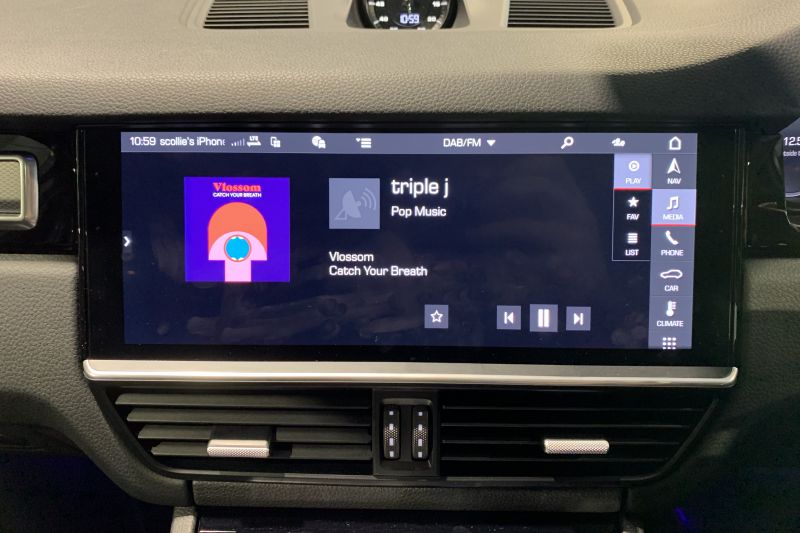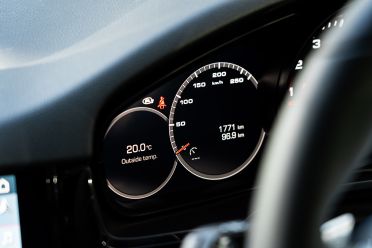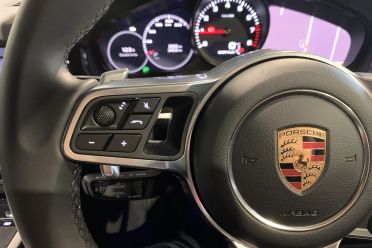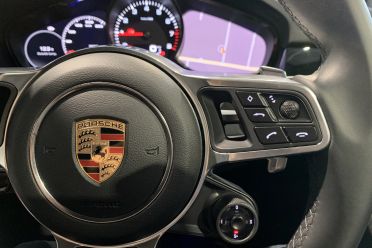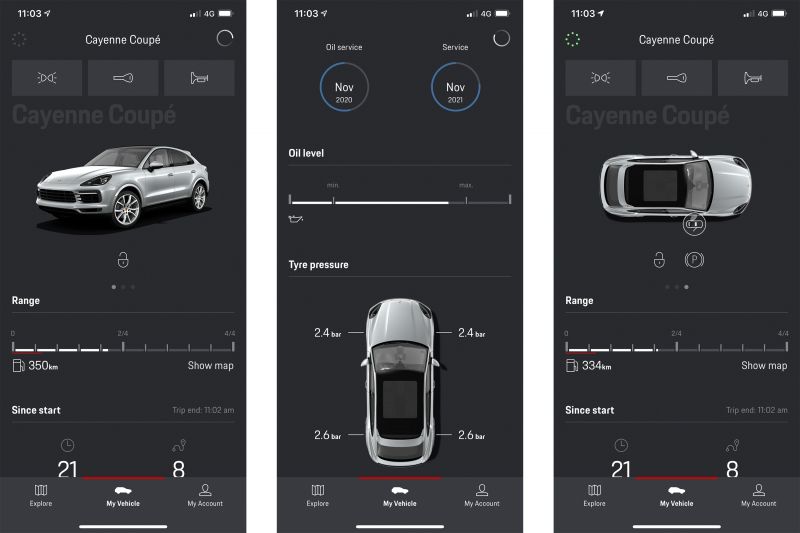As it has expanded its range of cars that aren’t sports cars, Porsche has been forced to back its historically excellent chassis engineering with the technological chops to take on BMW, Mercedes-Benz, and Audi.
After all, you could remove the infotainment system from a 911 and people would still buy it. People do, in the case of the Porsche 911 GT3 RS.
When it comes to the Cayenne and Macan though, the technology is more critical. Debuted in the current-generation Panamera, Porsche Communication Management (PCM) is how the brand plans to take down its German rivals.
Central to the system is a high-definition 12.3-inch touchscreen, backed by two 7.0-inch HD TFT displays flanking the analogue, centrally-mounted tachometer in the driver display. It’s also augmented by an app.
We’ll start with the 12.3-inch central screen, because it’s the nerve centre of the system.
The home page houses a number of customisable tiles, displaying everything from mapping and media information to shortcut buttons for the wireless Apple CarPlay, climate control, phone connectivity, and the start/stop system.
Porsche offers three presets, but you can customise them to your heart’s content. Once it’s set up, the home page is incredibly logical – but it takes a bit of setting up.
Make sure your dealer gives you a hand getting everything into the right spot upon collection if you aren’t a tech-savvy buyer.
Along with the tiles on the home page, the right-hand side of the screen houses shortcuts to the car’s major functions.
That menu scrolls independently of the home page, and allow the driver to directly access media, climate control, vehicle functions, and your trip computer, along with navigation.
When wireless Apple CarPlay is running, it occupies the right-hand side of the screen and climate controls take up a smaller section on the left-hand side. Speaking of which, CarPlay is effortless to pair and works more reliably than the other wireless setups we’ve used.
It’s not 100 per cent perfect, but switching between CarPlay and the radio, for example, is easier in PCM than some of its German rivals.
Android users beware, though – Android Auto isn’t included, but is rumoured to be coming.
Everything can be accessed through the screen, but there are also shortcut buttons ahead of the gear selector on the gloss black transmission tunnel.
Some are easy to access – the ones on the driver’s side of the gear selector – but those on the other side are a bit harder to reach.
The black, glossy surface might be visually clean, but it’s a magnet for greasy fingerprints. If you’re a bit obsessive like me, it’s probably best to keep a cloth on hand to clean it all.
Also set ahead of the gear selector is a volume knob for the radio, and a rotary controller the driver can use to scroll through menus. Realistically, both are surplus to requirements.
Porsche furnishes the Cayenne Coupe with two USB-C ports in the glovebox, and a third in the rear. There’s no wireless phone charging, unfortunately.
Our tester featured the standard 10-speaker (150W) surround sound system, which is arguably all you need. It’s clear and offers punchy bass at higher volumes, although the optional Bose setup no doubt takes things up a notch.
On the move, the widescreen infotainment display is lightning quick to respond, and although there are some small icons there, the system is clever enough to know when your digit is approaching and make the buttons bigger when required.
The same technology is in use across the Volkswagen Group, and allows designers to have a clean, simple interface without sacrificing usability. But it isn’t perfect.
Some functions are buried under too many menus, such as changing audio source – there’s more than enough screen real estate to have a list of inputs across the top of the display, but you need to dive into a submenu to change them.
Along with the central screen, the driver is faced with two 7.0-inch screens in the instrument binnacle.
The left-hand side permanently displays the external temperature in its leftmost spot, along with an analogue speedometer, odometer reading, and cruise control data in the slightly larger one inboard of it.
On the right-hand side, the larger of the two dials can be customised to show information about the Cayenne’s vital signs – such as oil temperature and pressure, battery voltage, and coolant temperatures.
It also can also be used to control the Sport Chrono timer atop the dashboard. The small, right-hand dial in the binnacle permanently serves as a clock. Both dials can be combined to show a large map, however.
The driver can toggle through these options using two metal scroll wheels on the steering wheel. For us, it was a case of set and forget: once they were set up, we didn’t fiddle too much.
The system is intuitive, and offers plenty of scope for customisation if you’re so inclined, but not being able to do more with the outermost dials feels like a bit of a waste. Especially given you can’t activate voice control functions, change radio stations or switch between songs by using the steering wheel alone.
The steering wheel is also home to volume controls, phone shortcuts, and a customisable function button.
Finally, the Porsche Connect application. Most luxury carmakers now offer some sort of wireless connectivity, but Porsche has made a concerted effort to get new owners on board with its iOS and Android app.
Australia actually has the highest sign-up rate in the world – thanks no doubt to the fact dealers will get the app set up on an owner’s phone as part of the delivery process.
As with the rest of the infotainment system, it’s polished in the extreme. Thanks to an LTE SIM in the car, you can turn on the lights, honk the horn, or unlock the car from your phone.
Right now the Cayenne Coupe is back with Porsche, but I could give the service techs a proper fright by activating the horn from the comfort of my office (aka the kitchen table).
It also offers live fuel readings, keeps track of your service intervals, shows a live location, and allows owners to check the most recent tyre pressure readings.
But most useful is potentially the ability to have Porsche Connect integrate with your phone’s calendar. If you have a 4pm meeting with a set location it will tell you when it’s time to leave, and have a destination ready to roll in the navigation. Clever.
In our experience the app is quick to load, and there isn’t too much lag when you send a command from the phone.
Much like the rest of the Cayenne Coupe, Porsche Communication Management is polished and dead easy to use.
Make sure you spend the time getting it set up, though. Once it’s been customised to your tastes, there’s very little it can’t do.

